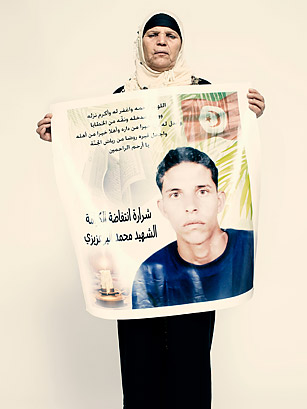NB: This is my personal analysis of contributions to question four from the forum. This post is the fourth in series of six, analyzing each of the six forum questions that were discussed.
The fourth question for the forum was about financial sustainability. With a thorough discussion on partnership models in question 1, the focus of this section was therefore on financial sustainability of such partnerships. Also with the business case laid out nicely in the previous discussion, partners have no choice than to look into the future of such partnerships through sustainable approaches.
Ensuring financial sustainability requires looking at the sources of revenue for the service. In this context, I believe the main source of revenue is from the users – the rural poor agricultural farmers supplemented by other users. So thinking of a long-term sustainability will call for actions beyond the roll-out funding to ensure that services being provided meet the needs of the users to continue paying for them.
Question 4: How can a partnership model between a Mobile Network Operator (MNO) and Agricultural Partner (AP) increase the financial sustainability of the service?
As stated above, the question assumes that without a partnership (i.e. either MNO or AP alone) delivering agricultural service to rural farmers should have some financial sustainability. So a partnership between MNO and AP should increase this financial sustainability due to the unique value proposition that each brings into the partnership.
Background
A nice background to financial sustainability of services to rural people was presented by one of the experts. It brought out the fact that in most developing countries, the bottom of the pyramid offers an excellent opportunity to the Mobile Network Operators (MNOs) for increasing the rural penetration and achieving a large customer base. At the same time, the targeted segment is price-sensitive, making it necessary to develop affordable products or schemes.
With specific example from India, the contributor stated that falling mobile tariff over the last decade has been a major enabler for increased rural penetration providing increased business volume to the MNOs and an enabling environment to the APs for extending the advisory services to the rural base. Another contributor recalled that, in Africa between 50% to 80% of the workforce depends on agriculture and in most cases it also represents its GDP. So considering the transaction that goes on in the agricultural industry, it will worth it for MNOs to take a look at this industry, when investing in mobile agricultural services.
Financial Sustainability through AP-MNO Partnerships
Discussants pointed out that a partnership between MNO and AP can increase the financial sustainability of mobile agricultural services to rural farmers because of the complementary value propositions that each partner brings into the partnership.
- While MNOs are in the business of collecting small amounts of revenue from millions of customers and also have the business systems to support this, the APs have the value added service that the users need for generating this revenue.
- The MNOs are also skilled at marketing and getting feedback from customers but again, for these services to meet the demands of the users, APs are the right partners to develop the necessary rapport with the farmers.
- The MNOs have many business skills, systems and discipline that complement the know-how that APs bring to a partnership.
- The MNOs also have a strong profit incentive to keep focused on what is financially sustainable.
- MNO-AP partnership could allow the MNO to understand and learn from the AP how farmers conduct their business and over a period of time, they can build products that will help farmers enhance their yield and in turn increase the profitability of the partnership.
From a different perspective, another contributor classified the strategy of ensuring financial sustainability of MNO-AP partnerships into 3 main dimensions. These are:
1) Short term: In the short term, the MNO may have to pass on part of the benefit of acquiring a new customer as an investment for their future annuity that can accrue from customer loyalty. They may also have to share a part of the future revenue based on the increase in average revenue per user (ARPU), and incentivize the service through the talk time sales to the users. This arrangement provides the initial impetus for extending a high quality advisory service to the users.
2. Medium term: In the medium term, there is the possibility of monetizing the services by the MNO. There are existing models, which are subscription based in which a farmer who is getting value for money would be willing to pay for the services.
3. Long term: In the long term, it requires continuous engagement with the customers which may provide an opportunity to extend other value added services related to financial including education, livelihood, health, etc. In each of these, the subscribers can be provided services through mobile phones on subscription basis or usage basis.
Presented from the MNOs’ side, another discussant also looked at how MNOs are able to benefit indirectly as a result of MNO-AP partnership. These are:
- Increase in Average Revenue Per User (ARPU) of existing user base. The ARPU of the regular rural user versus ARPU of rural users of Agri VAS on the same network, multiply the difference by the number of Agri VAS subscribers.
- Increase in market share. Increase in number of rural customers attributed to Agri VAS is a source of additional ARPU every month. ARPU from new Agri VAS customers could be equal to regular rural ARPU.
- Increase in loyalty and decreased churn. Churn rate in a regular sample versus churn rate in a sample of Agri VAS users. This % difference multiplied by number of Agri VAS multiplied by rural ARPU is the saved revenue of MNO due to decreased churn.
- Reduction in acquisition cost. The acquisition cost per customer of a MNO multiplied by number of new network subscribers attributed to Agri VAS is the saved acquisition costs for the MNO.
It is also observed that, MNO-AP partnership could increase the credibility of the whole venture thereby enabling them to explore other sources of revenue generation such as through m-governance services (which are being actively promoted by governments) and m-commerce activities.
Multiple MNOs in a given Partnership
The issue of multiple MNOs partnering with APs came up again in relation to the financial sustainability of the partnership. The questioner was interested in the trade-offs from taking a multi-MNO approach versus an exclusive approach in countries where there are two or more MNOs sharing the market more or less equally. In other words, would the strengths of having one exclusive MNO as a partner be so diminished by a multi-MNO approach, that a multi-MNO approach would rarely be seen as a likely path to financial sustainability?
There were mix responses to this concern including the fact that MNOs, especially in countries where market share is relatively balanced, will all try to develop their own proprietary mobile agricultural platforms with similar content and business models, which will result in a race to the bottom. Some others believe that multi-MNO approach is possible but:
a) Agriculture partners need to retain ownership of the data, thereby allowing them to use it on multiple platforms but, add value to each MNO by supporting them with the development of differentiation strategies.
b) Agriculture partners can work exclusively with an MNO but, as part of that effort, work with the telecom company to establish a fair and transparent pricing model to enable out-of-network users to access the information.
Apart from these ideas, there was no specific examples of multi-MNO partnerships from the forum. But another interesting view from India was that, because there is already a substantial struggle to ‘sell’ agricultural content, the issue of exclusivity is debatable. However if the agricultural content is customized and filtered enough (customized as per local needs) placing the same in a shopping cart is relatively easy.
So how can a partnership between MNO and AP increase financial sustainability of such association? Each partner has some unique skills and abilities that they use in their business as shared above to financially sustain their activities. Bringing these unique qualities together is expected to increase the individual potentials of the partners at the same time ensuring higher quality service to the users.
NB: The Next in the series (5th) is “Reflections on mAg Services: Content Sourcing, Quality Assurance & Dissemination” (Available on 01/03/2012)
The first, second and third posts are:
1. “Reflections on mAg. Services: Partnerships Between MNOs and APs”
2. “Reflections on mAg. Services: Barriers to Scale“
3. “Reflections on mAg Services: Is there a Business Case for Serving Farmers?“

















































